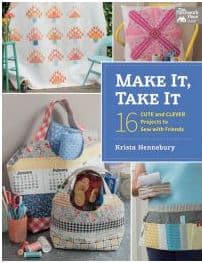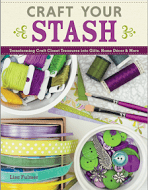 Fearless Design for Every Quilter: Traditional & Contemporary 10 Lessons Creativity & Critique by Lorraine Torrence
Fearless Design for Every Quilter: Traditional & Contemporary 10 Lessons Creativity & Critique by Lorraine Torrence
This is the year of cleaning up little details. This book has been on my list for a long time as I worked through the Design Series with Sandy. We haven’t finished the podcasting portion, but I want this book off my list. This book did not take me 4 years to read! I refused to take it off my list until, first, I finished the design series with Sandy and, second, I wrote this review.
I have taken at least one class with Lorraine Torrence. She is an excellent teacher who teaches concepts and techniques more than projects. In the classes I have taken with her, and articles & books by her I have read, the principles and elements of design infuse her work. Thus I was excited about this book when it came out. As I started my own studies into the principles and elements of design, I found this book to be a good resource and starting place. It is, however, not comprehensive.
The book comprises the creative process as well as five of the principles and elements of design. It starts with a comprehensive table of contents (pg.4) and continues with an introduction that includes a brief history of the contemporary quiltmaking movement. The introduction continues with a section from each of the two authors. Lorraine’s section talks about her long term Design Essentials class, including sketching out the content of the class allowing any shop to offer such a class. I am not sure that was the intent. Jean was a student in the class and talks about her experiences while Lorraine talks about the evolution and teaching of the class.
The introduction is followed by a short section on the goals of the books and some introduction on how to use the book. Critique and inspiration are part of using the book and are described in this part as well.
The overall message in this section is figuring out the exercises and that people learn more when the instructions are vague or do not give all the information. This is not meant to deprive the reader, but to encourage experimentation.
The above sections are followed by “Commit to Create: The Creative Process” There is an interesting discussion about how “being creative is not a mysterious process.” (pg.8), telling the reader that creativity is a process in which anyone can engage. There are comments in this section that I have said to others. This section is not all about telling the reader s/he is creative, there is also a process outlined and how to engage in each step. The process includes: Prepare, Incubate, Create, Evaluate.
I like this process because it is simple yet effective. The authors provide a lot of information, but it is concise, to the point and easily digestible.
The Creative Process is covered in the Critique Process (pg.11). The word critique is scary but this section starts by talking about vocabulary and phrasing, which helps to take some of the sting out of the process.
Throughout the book are references to other books and articles that add to or expand on the content.
Students participated in this book and they are introduced starting on pg.13. “Their work and thoughts appear as examples of design and critique.” (pg.13) “The first part of the design course focuses on the principles and elements, exploring the relationship of these components to the overall success of a quilt design” (pg.11). The principles and elements covered are Balance, Asymmetrical Composition and Value, Scale, Value and Balance, Identifying Value in Color, and Color. As I said these are a good place to start, though not comprehensive. Each of these chapters gives an exercise then goes through a critique section, using the student work as examples. There is also a section within each chapter called ‘the continuing education process’, which suggests different approaches and tools.
These chapters are all full color with many images throughout. The words making up the chapter are filled with helpful information, definitions and examples. One quote, which is a great reminder is “Doing the exercises in this chapter is simply a way to try out color ideas visually to find new combinations….” (pg.50). Replace ‘color ideas’ with other concepts and the line becomes a universal excuse for going to your studio and working.
The next major section is called “Design Sources and Inspiration” (pg.52) and focuses, not surprisingly, “on sources and inspiration” (pg.52). Some of the inspirations are Words (pg.53), Using Images from your Surroundings (pg.58), and Maintaining Unity Using Panels (pg.64). These chapters also show student work in the critique section, include a creativity exercise and suggested reading.
The section called Designing Borders and Quilting (pg.69) is put together like the others, but seems to be a section that the publisher said the authors had to include. It isn’t a comprehensive how-to quilt section; it is more about fitting the quilting to the overall design of the piece. The quilting doesn’t show up very well on some of the pieces in the critique session (pg.70-72).
There is a section on borders, which is interesting. It starts with “A good way to audition borders for a quilt is to photograph the quilt and make several paper picture frames for the photo” (pg.74). Of course, you could copy the fabric you were planning on using or you could take the idea and reproduce it in EQ or another quilt software.
Throughout the book you are encouraged to produce a ‘library’ of designs. In this section, the idea is to add to this concept with a quilting design library. This reminds me of Inspiration Odyssey by Diana Swim Wessel. You could just use her materials instead of creating your own, but creating your own makes your project personal and provides a starting place. Christa Watson has a new machine quilting book that has fill designs, etc, that would be useful. This idea isn’t bad if you have ideas of your own that differ from those published. As the authors say, it “will be a good resource for ideas.” (pg.74)
There is a tidbit in the Creativity Exercise in this section that I really like. The authors say “…do a mental check to see if you have built ‘fences’ around your ability to be creative. Sometimes we can get stuck in what we know have always done, rather than focusing on what we creatively dream” (pg.74). I really love this thought. It isn’t easy, especially when we are in ‘get ‘er done’ mode, but its important to try to remember and practice.
The chapter in this section is called “Designing and Working with Pattern,” which is all about understanding the fabric design process and using those fabrics you create (pg.75). The exercise is to design fabric and the assignment gives you ideas on how to do it such as printing on fabric and others. I immediately thought of Tsukineko inks. This creation process is followed up by using the fabrics.
The next major section is called “Working in a Series” and covers topics such as What is Series Work, Where to Start, and How Long to Work on a Series. This section ends with the reminder that quantity equals quality and is followed by student work.
The book sums up with a Section called “Summing Up” (pg.90) that tells readers where to go from this point. The suggestion is to start your own critique group and the book gives a list of things to consider when doing so (pg.91). In the “Some Final words” section there are thoughts on your inner critic, on inspiration and other things.
I am disappointed that this book does not have an index.
Goodreads is showing the ebook for this review, but I have the print version, which has a nice selection of art quilt books on the last page by such quilt luminaries as Jane Davila, Katie Pasquini-Masopust and Ruth McDowell.













